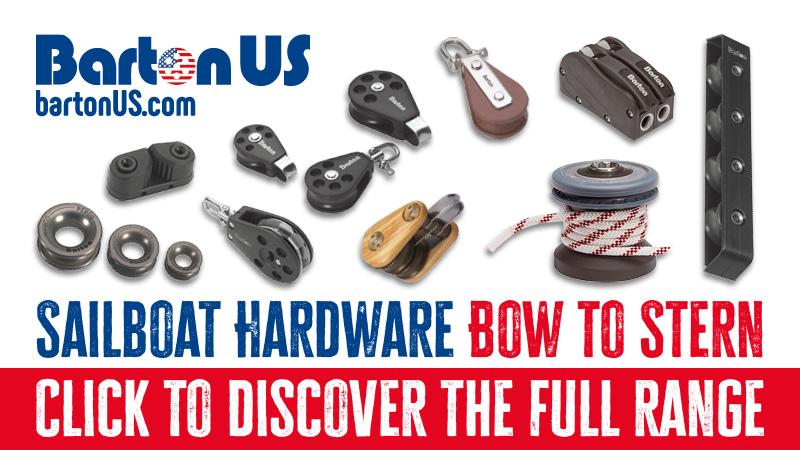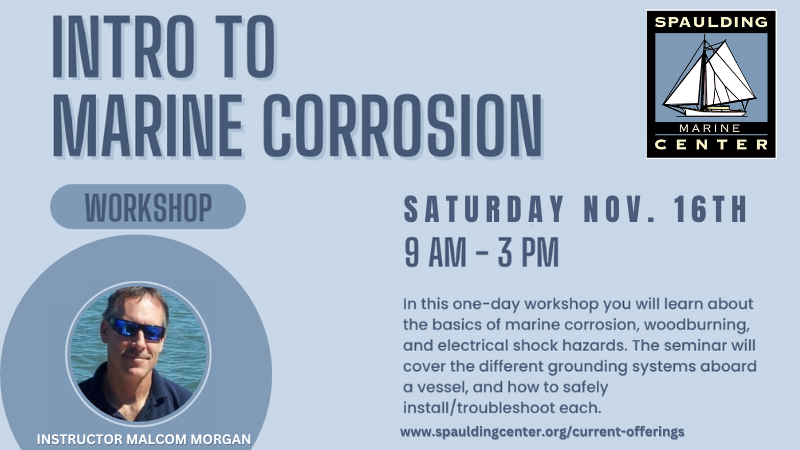
New Information on Canceling Pre-2005 TIPs in Ensenada
We’ve heard from a good number of southbound cruisers who have been stuck in limbo with uncanceled TIPs issued prior to 2005. We’ve just received word from Baja Ha-Ha participants Michael and Sally Aldridge, on the Santa Cruz 52 Sweetheart, that they were able to cancel their two TIPs and get a new one issued with a trip to Ensenada. Below we share their complete story, hoping others can do the same. As with all such tales, results may vary, but it sounds like a clear path with a hopeful outcome.
We had two pre-2005 TIPs to cancel, one from 2001, and the other from 2004.
On October 16, we walked across the border at PedEast at San Ysidro in the morning and caught the ABC bus down to Ensenada from Tijuana because we didn’t want to mess with driving a vehicle across the border and dealing with a motor vehicle TIP and insurance (too many TIPs already!). Walking over the border turned out to be super-easy, with no lines, and the bus is nearby and is comfortable and inexpensive.
When in Ensenada (we got there at around 10:30 a.m.) we started with the Banjercito Ensenada on Av Teniente José Azueta.
(Building marked with a thick red line on attached image)
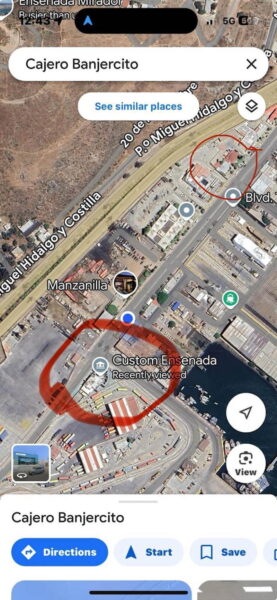
We spoke with manager Elia Beatriz Urquidi Cobos, who speaks great English. We showed her relevant boat documentation.
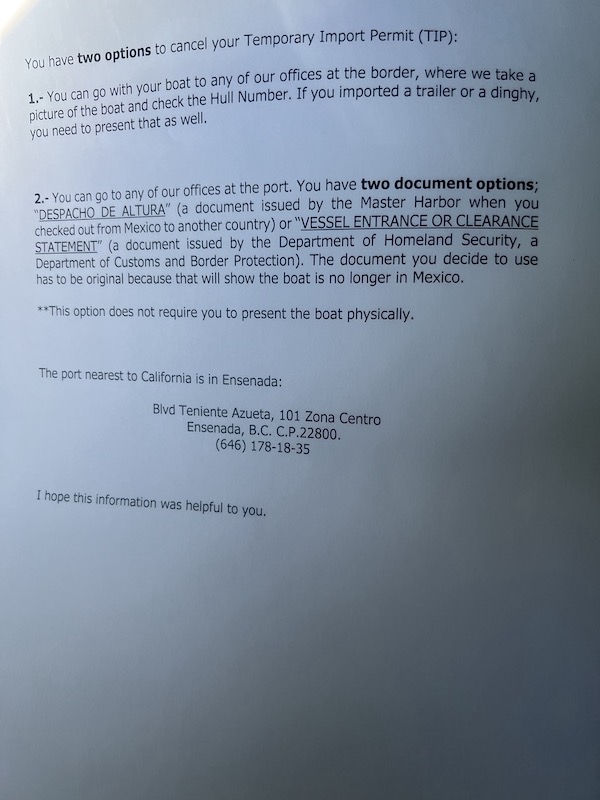
Elia made three copies of each, and also verified and checked the report in her system.
Elia explained we needed to go to the aduana office down the street to start the process.
At this point, Elia stepped outside to direct us, and she and the manager of the aduana, Jorge Badillo, spoke in person on the street. Not sure if they just “ran into each other” or whether this was planned, but it turned out to be a very fruitful conversation. Jorge reviewed our documents right there, confirmed that everything was in order, and told Elia what else we needed to do
Which was the following:
- Write a letter to the aduana asking for the TIPs to be canceled
- Include the TIP number, previous owner names, etc.
- State that we are the new owners
- Print it
- Sign it
- Make three copies
We went to the tourist information office around the corner to do this, and they were very helpful and made printouts and copies for us for free.
Then we went to the aduana de Ensenada with all the paperwork. The office is marked with a thick red line on the image, and the address is Blvd, P.º Olas Altas 110, Recinto Portuario, 22800 Ensenada, B.C., Mexico.
This office is behind a heavy layer of security, and they told us that only one person can go through, so Michael, my husband, did this for us, as he is the appointed “manager” of our LLC. He spoke with the woman at the desk and she asked for the letter to be in Spanish, so she translated it for Michael, he wrote it out by hand, and she stamped it. She told him it would take one week to get the TIP cancellations done.
We then showed the stamped letter to Elia back at the Banjercito, but she said she actually needs a printed and stamped image of a “cancellation screen” from aduana to get the process going on the Banjercito side. She said once she has that, she can send it to the Mexico City Banjercito and it could be canceled out of the system intraday, depending on time differences.
So we went back to Jorge at the aduana to ask for that and he committed to doing just that the next day. Jorge promised to email it to Elia it at 10 a.m. the next day, so we stayed overnight just to make sure that happened.
We stayed at the Hotel Coral, as it was a good chance to speak with Fito Espinoza, the dockmaster, who is very experienced with TIPs and immigration. He suggested it was a good idea for us to see it through. He was very interested to hear about the results of our efforts, as it will allow him to help many other boats.
Michael went back to the aduana office the next day at 10 a.m. (on 10/17) and he stayed there until he had the right docs in hand.
At this point we have now canceled the two old TIPs!
We then took those pages to Elia, who scanned them and sent them to her superiors. The old TIPs were cleared out of the Banjercito system within a few hours and we were able to successfully apply for a new TIP that day. Again we sat in the office until this was all done (about 30 minutes) and we now have the TIP in hand.
Summary: The Sacramento consulate was correct: It is now possible to cancel pre-2005 TIPs with the aduana in Ensenada, and the Banjercito in Ensenada can get it cleared from their system with the right documentation from aduana. Fito confirmed this is exactly how the process worked in the past, but he did not know it was working again at this time, and neither did BC Connections.
Jorge (aduana Ensenada manager) and Elia (Banjercito Ensenada manager) are competent people who seem to have a good working relationship, and they are collaborating to make it happen. It helps that these offices are down the street from each other. Not sure if it’s dumb luck and they have started canceling old TIPs again at just the right time for us, or we are geniuses. Either way, we will take it!
There are no charges for the process of TIP cancellation, and it can be done by the boat owner through the official channels without an agent in one or two days. Be prepared for multiple visits to each office.
Hopefully this bodes well for other boats in this situation.
Feel free to send any questions to [email protected].
Kiwis on Match Point in 37th America’s Cup
We are now on Match Point at 6-2 with Emirates Team New Zealand ready to pull off a historic hat trick of winning the America’s Cup three times in a row. Actually, they will have won the Auld Mug once and are now defending it twice, but that is a point of minutia for the historians to debate as the New York Yacht Club won the Royal Yacht Squadron Cup once and defended the Cup 23 times, but never “won” the America’s Cup.

What was a “bad day in the office” in Races 5 and 6 to an almost certain dressing down and “sharpen-up” debrief from ETNZ coach Ray Davies and CEO Grant Dalton that night turned to a beatdown in Race 7 as the Kiwis picked up a massive shift at the start and sailed away over the horizon. They won by a margin of 1 m 13s to temporarily take a 5-2 lead going into the second race of the day.
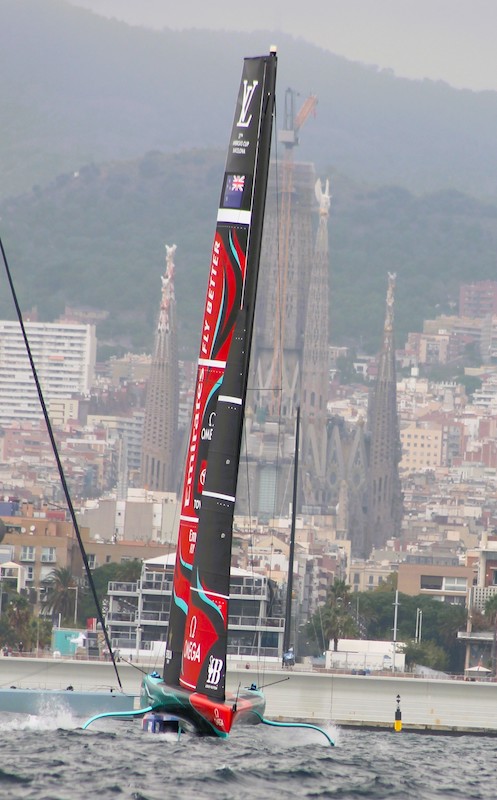
It was a complicated race course, with a lot of puffs and shifts and a much flatter sea state that seemed to favor the Kiwis. But in Race 8, after their second solid start of the day, ETNZ put the pedal down on a monumental shift as they worked their way up the “conveyor belt,” in commentator Peter Lester’s words, to double the lead as they sailed away to Match Point picking the shifts and choosing the right sails.
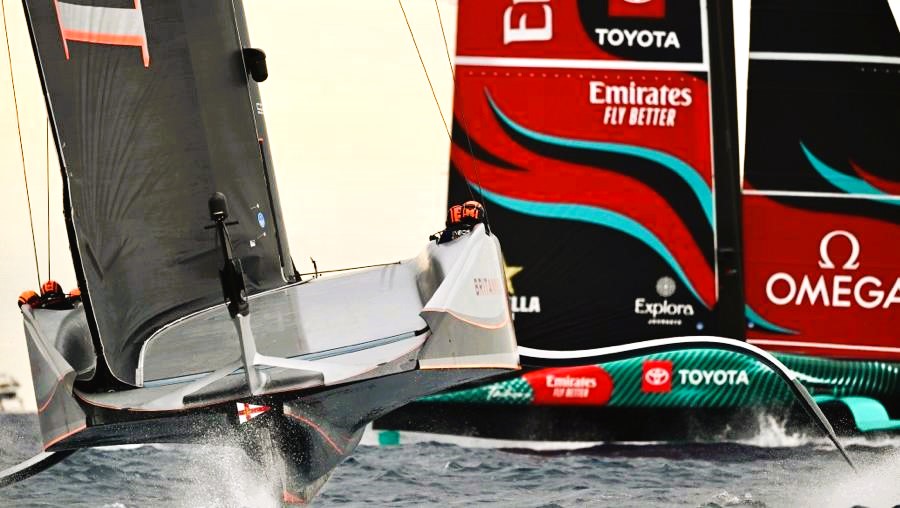
With the Emirates Team New Zealand Kiwi Nation and their Māori spiritual inspiration, along with a massive infusion of New Zealanders, the team must feel right at home!
For Ben Ainslie and the INEOS Team, it is now one race at a time as they attempt to chip away at the Kiwis’ formidable lead. There was an issue with INEOS’s rudder, as coach Tony Wilson said they “had three moments with the rudder and may have hit something damaging the leading edge.”
In scoring two wins on Wednesday, the British signaled their intent with a massive wave of momentum. scoring one relatively easy win after ETNZ uncharacteristically fell off the foils in the pre-start of Race 5. This was followed up by a 7-second win, as the Kiwis were not giving in at all, leading to a good day for the INEOS Britannia team all around.
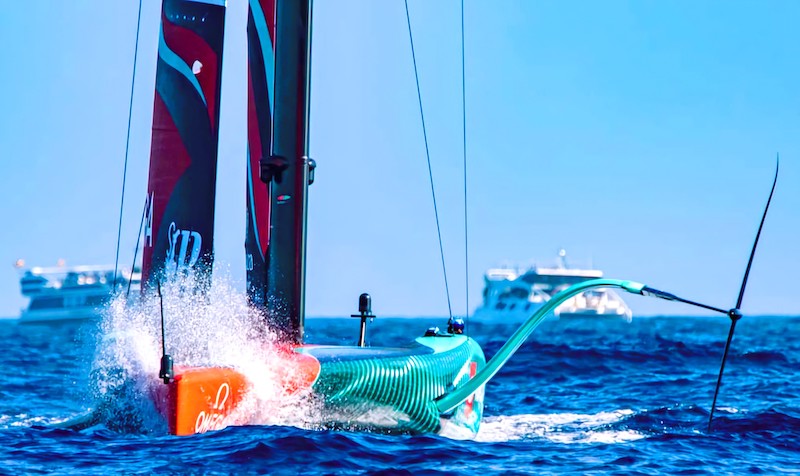
For the British, it’s the first time in over 90 years, since 1934, that they have won two races in an America’s Cup Match. They were shut out in 1958 and 1964. Sir T.O.M. Sopwith’s Endeavour scored the first two wins before Harold Vanderbilt’s Rainbow came back strongly to defend the Cup 4-2. History is certainly being made in Barcelona.
The opening race got underway on time with the wind above the 6.5-knot lower racing limit and a lumpy, bumpy sea state that the Brits’ “Flying Barge” loves as they dropped the Kiwis off their foils in an uncharacteristic mistake.
Still on their foils, Ainslie and company wing-washed ETNZ to really rub it in. It took the Kiwis a few minutes to point in the right direction to pop up on their foils and fly again. From that point on, for the Brits the race was all about staying on the foils, which became a moot point as the wind gradually increased as the race moved on.
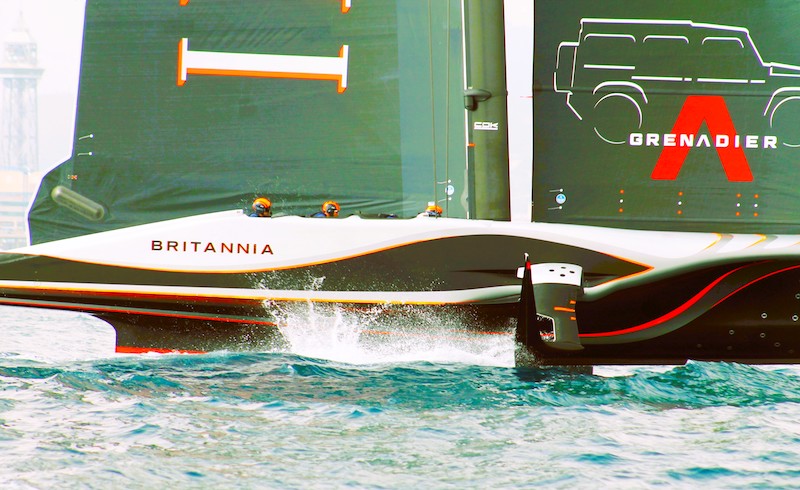
“Big day, massive day for the team. We really needed that, and I can’t say enough about how everyone across the board responded to being four down,” said Ainslie. “It’s just little things, it really is. These boats are so fickle in terms of how you set them up and the techniques of how you sail them. Going up against the Kiwis and seeing some areas where we were perhaps a little bit behind, so full credit to the coaching team and the engineers trawling through the data trying to figure out how we can make some of those adjustments.”
“That first one was a real shocker by our standards; to get low speed on the port entry and then get into a situation where we couldn’t cross, or maybe could have, that was just one we would like to forget,” said Blair Tuke, ETNZ wing trimmer. “We had to kill time not to be early and then by the time we pulled the trigger we just got caught on the back of two real nasty set waves. Then there was probably a bit of mis-execution from us. You never want to put the boat into a low-speed jibe.”
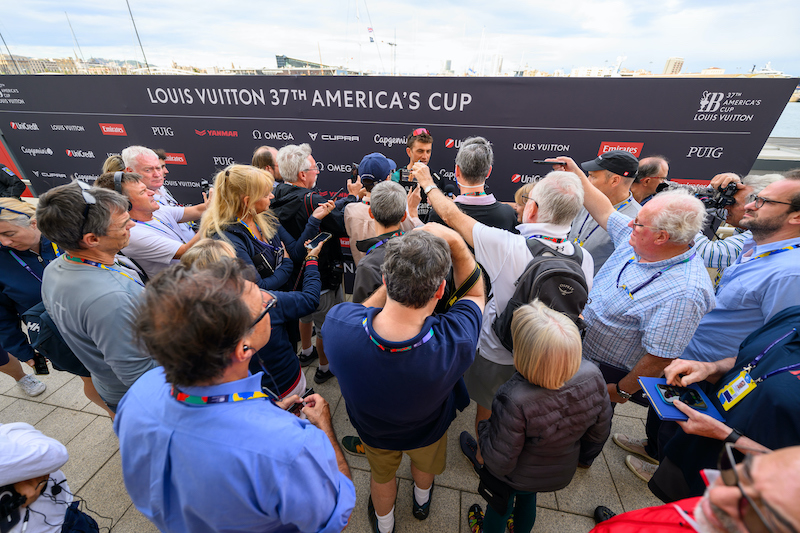
I am having the time of my life and I am trying to relish every moment here as reality is setting in that the Kiwis have a tight grip on the Cup again.
Barton Marine — The Bow to Stern in Sailboat Hardware
Made by Sailors for Sailors, Barton Marine has designed and manufactured sailboat hardware in England since 1948. Our range extends over 1800 products providing value and performance for racing and cruising mariners worldwide including from our US base in Virginia. The Barton range includes contemporary marine grade composite blocks, ball bearing performance wooden blocks, and an exclusive Tufnol block selection. The full range of low friction eyes, cam cleats, track and car systems, clutches, winches, Boomstruts, sailing kits and hundreds of accessories sell in over 35 countries globally to owners and boat builders alike. If you have not discovered the Barton range, visit BartonUS.com to explore and find your local dealers.
Like Pairing Good Food and Wine, but Talking About Sailboats and Sailors
When Bay Area sailor and excellent Latitude 38 delivery driver Christian Siefert didn’t find a crew to join him on his boat, he decided to sell one of his other boats. This led to what he considered a great pairing of sailboat and sailor.
“I had been looking for crew to help me with my maiden voyage in SV Outatime,” Chris tells us. “I attended the Baja Ha-Ha [Fall Crew List] Party but didn’t find a suitable candidate. I then decided to sell my beloved El Toro to a deserving sailor.
“They say the happiest two days for a sailor are the day you get a boat and the day you get rid of a boat. I tend to enjoy seeing a good match of sailboat and sailor.”
Chris continues, “I never could’ve guessed, selling my beloved El Toro would have led to making such great new friends and adventures. I turned down many potential buyers in order to find a suitable crew member. I knew almost immediately Danny was to be the new owner when he contacted me via Facebook Marketplace.
“I am very selective when it comes to pairing a sailboat with its new owner, so I was happy to have found this young couple,” he adds.
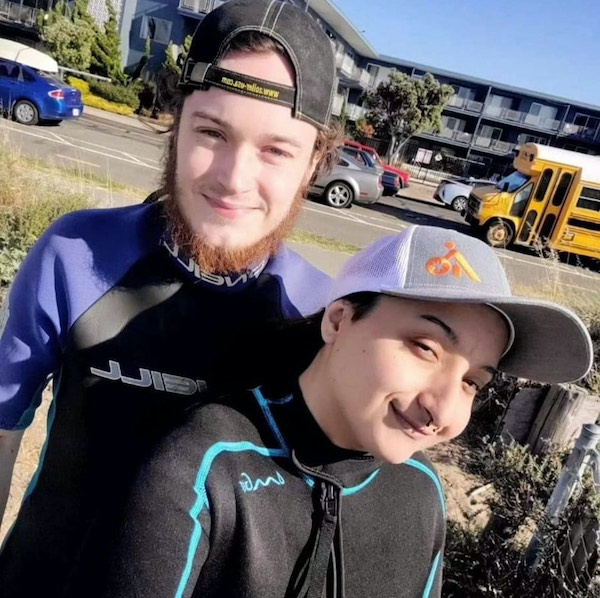
‘They are full of energy and have a strong desire to sail. Watching them enjoy that old dinghy in the Bay Area, with a smile from ear to ear, really rekindled my own love for sailing.”
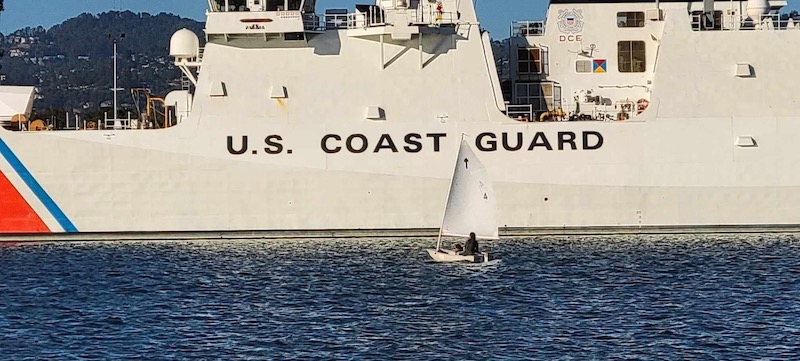
“I decided to gift them my 1966 Coronado 25.
“Danny had the look of a kid getting a present. He was so happy! He and Emra worked diligently to get the old Coronado shipshape.
‘I couldn’t think of better people to own that particular vessel. Watching him motor out of the marina for the first time at night was quite a moment for both of us. I was reminded of why I got into sailing to begin with.
“He was to just do a few passes at the marina and then park it back at the dock. He felt so confident that he ended up dropping anchor that night and spent the night. I felt a sense of pride and happiness that I had indeed found the right owner for my extra sailboats.”
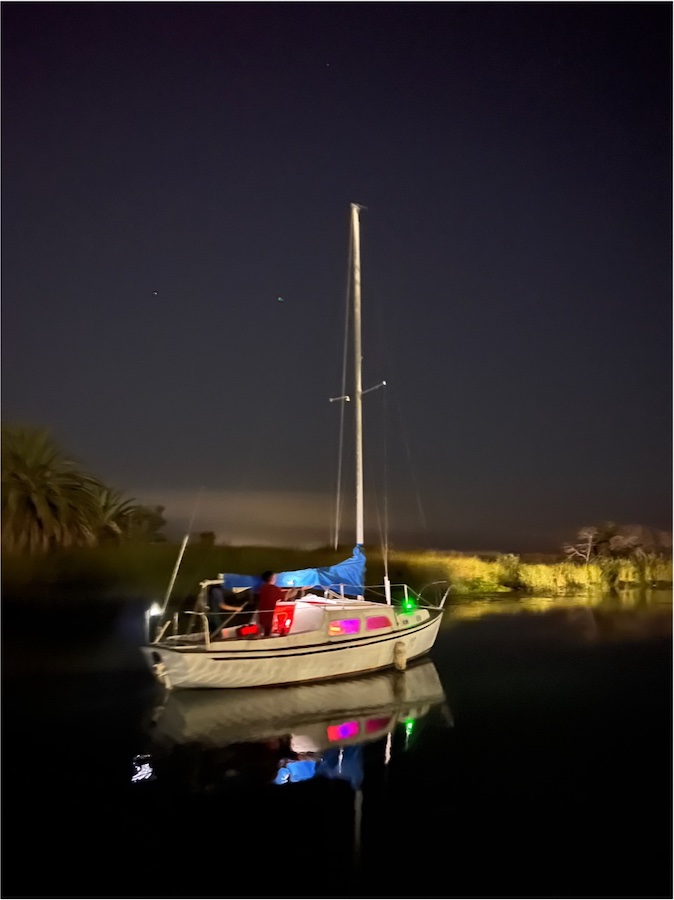
“We have been working on SV Outatime ever since. We are preparing to set sail as a crew in the near future.
“They say happiness is the day you buy and sell a boat. I am just happy my boats found a good owner and are actually being used.”
A Look at Dredging and the High Cost of Mud
The approach of winter brings relief to firefighters as the rainy season soaks the landscape. It will also fill the streams, creeks and culverts with tons of soil, much of it settling in your marina. Along with the sediment come all the drops of oil and bits of plastic and other litter that have been collecting in Costco parking lots, in gas stations, and along the curbs of roadways. Once all that settles under your keel it’s the responsibility of the marina to dispose of it, regardless of where the pollutants originated.
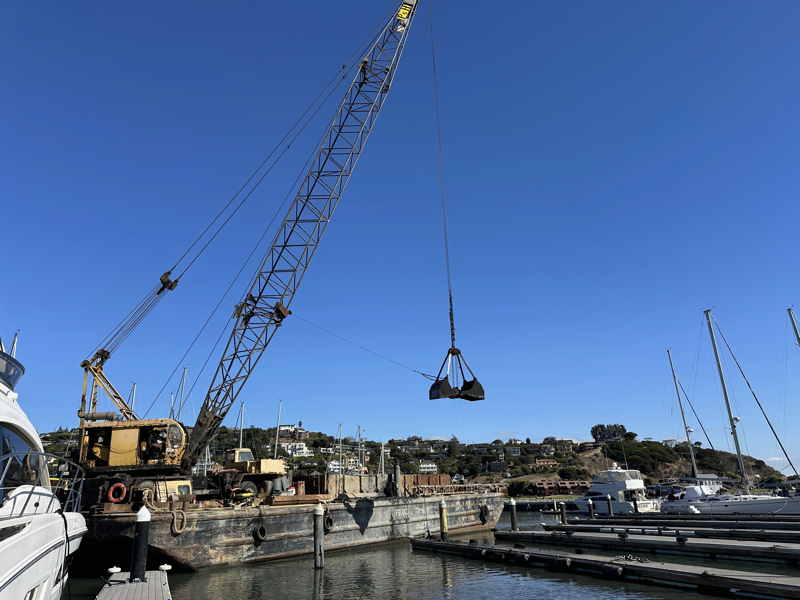
And it’s no surprise that the cost of disposing of the mud is going up. Reader and sailor Jim Haussener recently sent us a document from the State Water Resources Control Board outlining the 40% increase in dredging fees. It raises the price from $0.653/cubic yard of mud to $0.921/cubic yard. Those interested in the details can read the full document here, with the dredging fees on page 10.
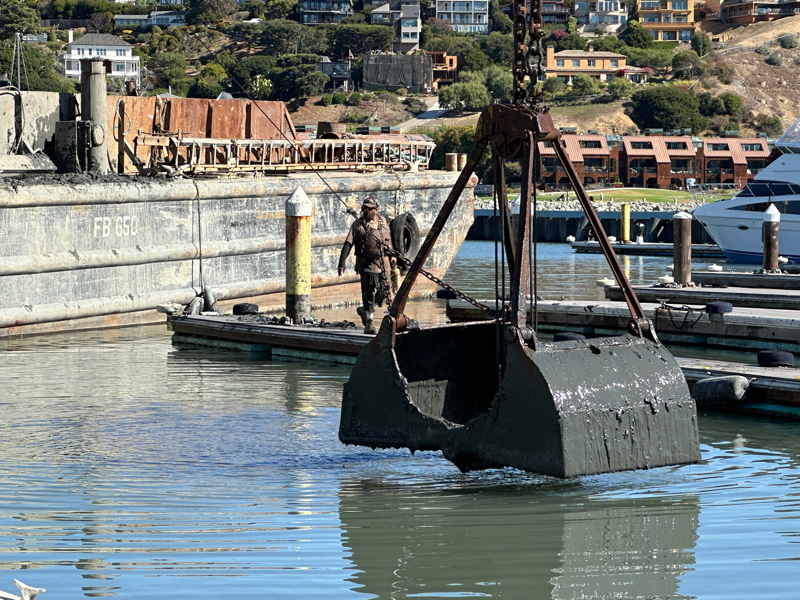
As we all know, the cost of hurricanes in Florida and the cost of sediment running into the Bay all seem to find their way into the cost of keeping the Bay and sailing accessible to all. This means that meeting the cost of keeping Coyote Point Marina open or Ayala Cove dredged is only getting more challenging. Our slip at the Corinthian Yacht Club is currently being dredged, so we have a front-row view of the enormous bucket-by-bucket process of keeping the water deep enough for our 6.5-ft draft.
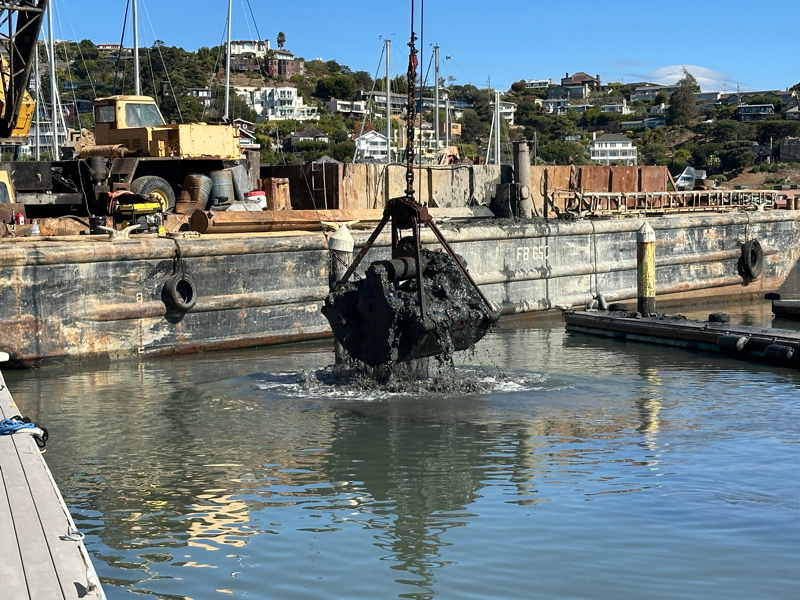
To keep sailing accessible on the Bay, we’re all going to have to be advocates for the funding to keep it affordable.
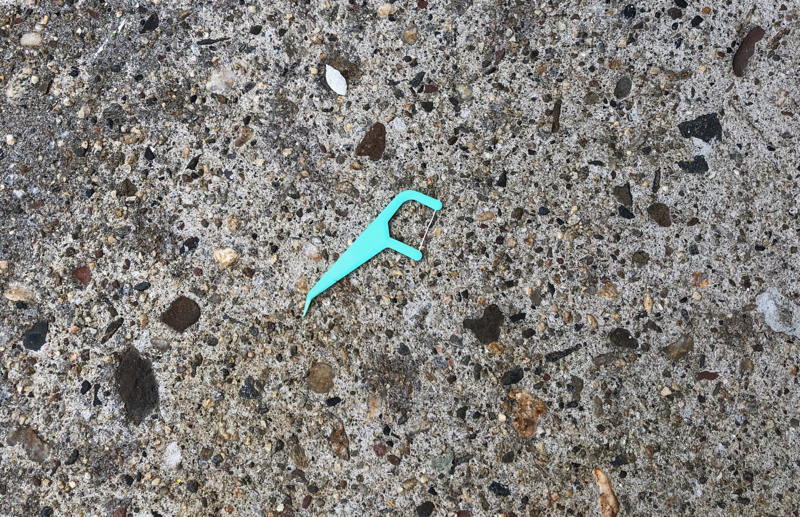
How do sailors advocate for access to the Bay? It varies project by project, but the recent dredging of the San Rafael Canal and the Petaluma River were the result of the actions of many citizen activists. Letters to Marin County congressman Jared Huffman helped those projects along, but it’s also being in touch with your town or county supervisors, your local congressional representative, and all channels open for ongoing civic engagement. The kids growing up today will be better off if they can continue having the access to the Bay enjoyed by their parents and grandparents.
And, as we’re always reminded every time we mention the cleanup of the Pacific Gyre, the best way to help prevent plastic and other toxins from polluting the ocean is to avoid buying them in the first place.
Max Ebb: Scallops on the Bay
“The only good knotmeter is another boat alongside that’s trying to beat you.” That’s according to Lee Helm, who likes to scold me with that reminder every time I call out a speed number from the instrument panel.
Lee usually finds newer and faster boats than mine to race on, but since most of my regulars were not available that day, I put Lee in charge of recruiting. She brought a handful of students from various graduate programs at the university: We had a history major and former intercollegiate racer assisting in the cockpit, a chemical engineer new to sailing at the mast, and a genuine merchant mariner — second engineer on a tugboat — running the foredeck. They seemed trainable, but it would take more than one race.
Sailing out to the starting line, beating to weather in a medium breeze under main and number one, it seemed like a perfect time to give my new cockpit crew a turn at the helm. Lee, having put some planning effort behind her frequent advice about the limitations of knotmeters, had arranged for a slightly larger and slightly faster boat in our division to rendezvous with us before the start, for some speed testing. They hove into view well to windward, sailing a deep reach to intercept, and brought up into the wind in a position to windward and a little ahead. The maneuver put both boats in clear air with neither boat affected by the other’s wind.
“Good work, making trees,” I complimented the history student after our relative speed and angles had stabilized. I could see the bow of our trial horse to windward dropping back ever so slowly against the background shoreline. “Higher and faster!” I said, thinking that I might have stumbled into a natural upwind driver.
“And that boat, like, owes us time,” Lee added.
But it didn’t last. The other boat found their groove, and we started to drop back very slowly. We were still tracking a little high, but the other boat’s bow was starting to cover up shoreline.
“Bring it down a little,” I advised. “Let’s get our speed back, then we can poke it up again.”
My crew did exactly that, and the knotmeter needle edged up a little. Lee eased the jib barber hauler ever so slightly, to widen the sheeting angle without introducing too much twist. Then we came up to the previous wind angle with enough speed to recover our loss as the jib was trimmed in again.
Lee couldn’t see the knotmeter from where she was positioned, but somehow she seemed to know when we had our speed back and it was time to trim for high pointing.
“It’s the sound of the bubbles,” she said when I asked her how she did it. “Like, power is proportional to speed cubed. If we accelerate from, let’s say, 6 knots to 6.3, that’s a 5 percent speed gain. But the power increase is an extra 5 percent cubed, which is more like a 16 percent increase in power and a 16 percent increase in energy left in the water in the form of waves, bubbles and foam. That’s a big change; even a human can detect it. And that’s why an experienced skipper who knows their boat can usually estimate speed with, like, awesome precision. The fun gauge is just a crutch.”
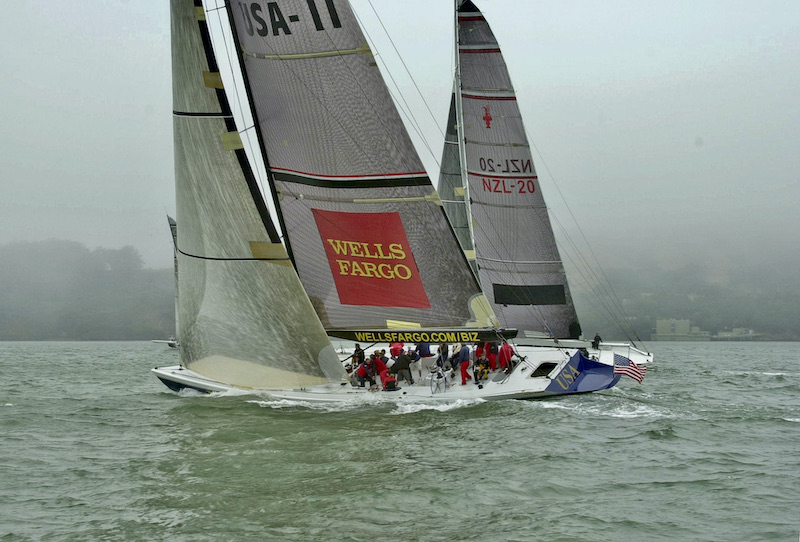
“I always wondered how old-time navigators kept an accurate dead reckoning without a knotmeter and with only very occasional use of their chip log,” I replied.

